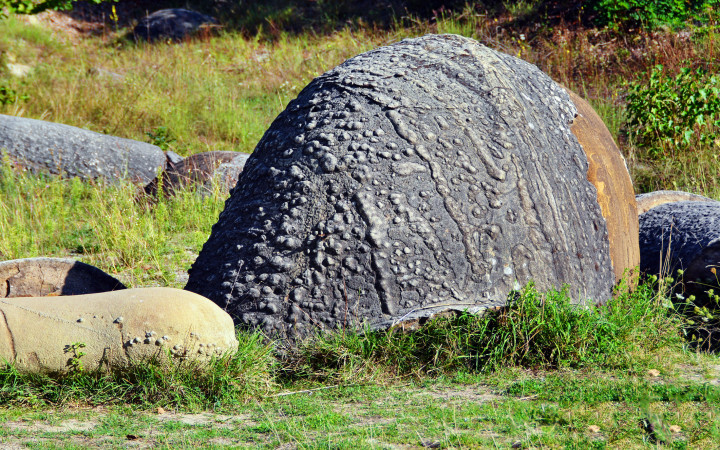Today’s Wonder of the Day was inspired by Wonder. Wonder Wonders, “Are Trovants Alive?” Thanks for WONDERing with us, Wonder!
We hope you brought your suitcase, because today, we’re traveling outside of Wonderopolis. Where are we going? It’s a place that’s known for brown bears, Gothic churches, and vampires. That’s right! We’re talking about Romania.
Romania is located in eastern Europe on the Black Sea. And there’s plenty to see there! It’s home to an underground glacier and hidden waterfall, just to name a couple of interesting places. However, we’re headed straight for a town called Costetsi. There, we’ll find the trovants, also known as living stones.
Are you WONDERing how stones can be alive? Well, the trovants aren’t actually alive—but they grow as if they were! For many years, the Costesti locals have watched these boulders become larger and larger.
The trovants vary in size. Some of them are only inches in diameter, while others have grown to be larger than adult humans. The largest ones weigh several tons. People have cut them open and found rings inside some trovants similar to those used to measure the age of a tree.
These strange growing rocks have fascinated people for generations. Many have tried to explain how they grow. Today’s geologists have their own theory that would explain the strange phenomenon.
How do modern experts explain the trovants? The stones are made of compacted sand and carbonate. When it rains, the sediments may absorb some of the water. This increases the pressure inside the stones and causes them to grow over time.
Growth isn’t the only thing that makes trovants seem alive, though. They’re also known to “reproduce” through new sandstone deposits after heavy rains. Like Racetrack Playa’s sailing stones, they also move, though not very far. This is likely caused by temperature changes in the soil around the trovants.
Of course, trovants aren’t the only stones that grow. In fact, many rocks change in size over time due to erosion and accretion. It just typically takes thousands or millions of years for an obvious change in size.
Have you ever seen a trovant in person? Romania has the largest number of them, but they can be found elsewhere in the world. If you visit a trovant one day, though, don’t expect to see it grow before your eyes. It takes many years for a noticeable change in the size of these “living stones.”
Standards: NGSS.ESS2.A, CCRA.R.1, CCRA.R.2, CCRA.R.4, CCRA.R.10, CCRA.W.2, CCRA.W.3, CCRA.W.4, CCRA.W.9, CCRA.L.1, CCRA.L.2, CCRA.L.3, CCRA.L.6, CCRA.SL.1, CCRA.SL.2




